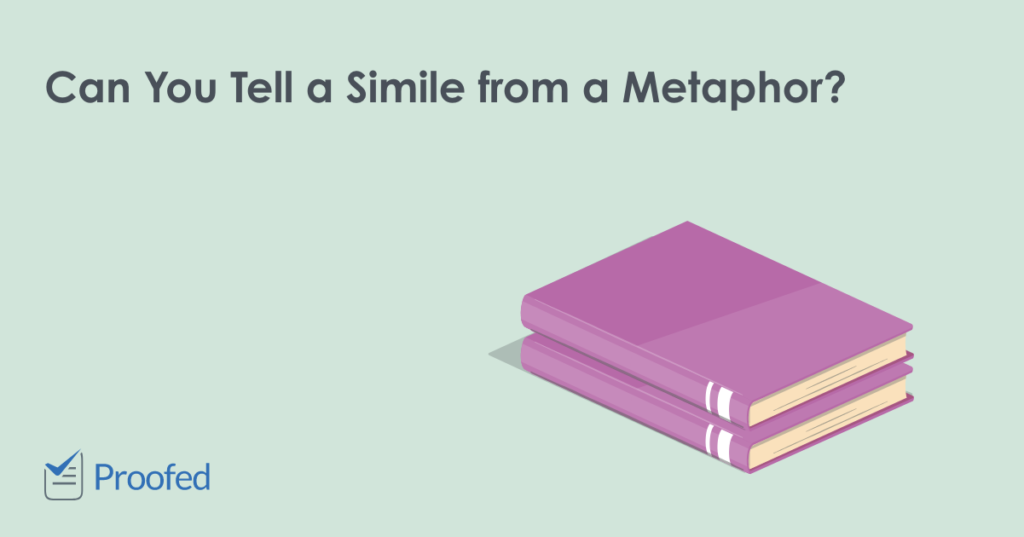We use similes and metaphors to make comparisons. And while they’re often associated with poetry, people use them in everyday language all the time (often without even realising it). But how do similes and metaphors work? And what is the difference between them? Let us explain.
What Are Similes?
A ‘simile’ is a comparison between two things used to highlight a quality (or qualities) they have in common. Typically, this will involve using the word ‘like’ or ‘as’. For instance, the following are both similes:
Glen had skin like silk.
Karis had been as busy as a bee all week.
Here, each simile draws attention to a shared quality:
- To say that someone has skin like silk is to say it’s soft and smooth.
- To say someone is busy as a bee is to say they’re working energetically.
However, we’re not saying that Glen literally has skin made of silk, or that Karis is flitting from flower to flower collecting pollen.
Instead, we’re comparing two things to focus on something they have in common. And this is clearly indicated with the words ‘like’ and ‘as’.
What Are Metaphors?
Like similes, we use metaphors to draw attention to similarities between two things. But metaphors work by describing something as if it were something else, not simply ‘like’ it. For example:
Find this useful?
Subscribe to our newsletter and get writing tips from our editors straight to your inbox.
Tom Cruise is dynamite in his new film.
Here, we’re not saying Tom Cruise is literally playing an explosive in the film. We simply mean that he gives a powerful performance, similar to the explosive power of dynamite. We could turn the sentence above into a simile, however, by adding ‘like’ before ‘dynamite’:
Tom Cruise is like dynamite in his new film.
This is clearer, but it’s less forceful than using a metaphor. And this symbolic power is why metaphors are particularly common in literature and poetry.
Summary: Similes and Metaphors
We use similes and metaphors to make comparisons. The difference between the two lies in how we make that comparison and the language we use:
- A simile implies that two things are similar using words such as ‘like’ and ‘as’ – e.g. Life is like a long, winding road that lies ahead of us.
- A metaphor describes something as if it were something else to highlight a similarity – e.g. Life is a long winding road that lies ahead of us.
If you want to ensure you’re using similes and metaphors effectively in your creative writing, moreover, we can help. Simply send your document for proofreading and let us know what kind of feedback you’d like.
